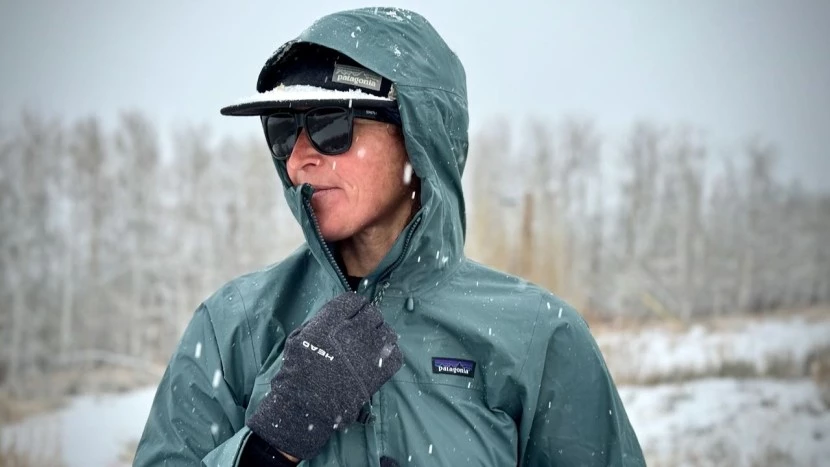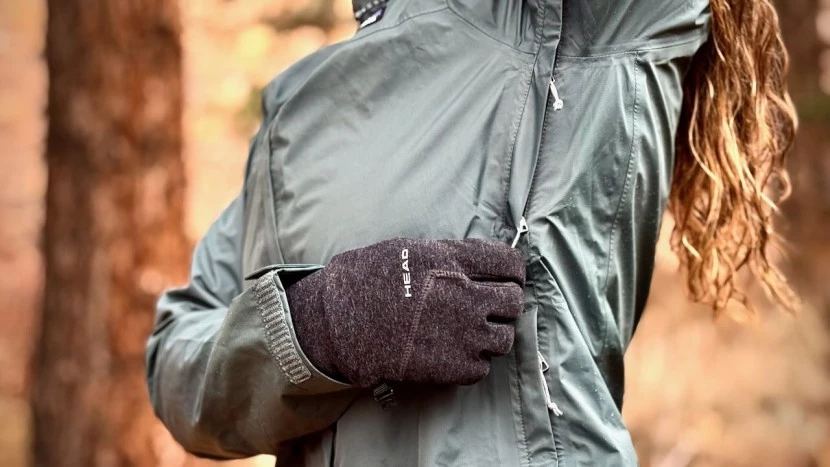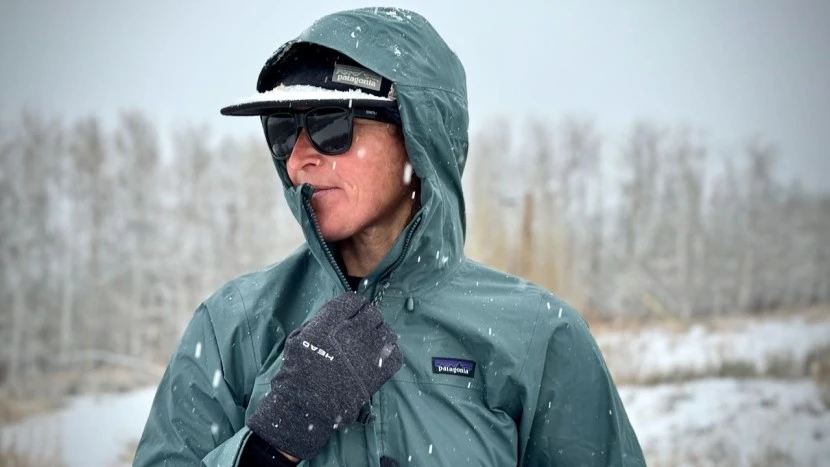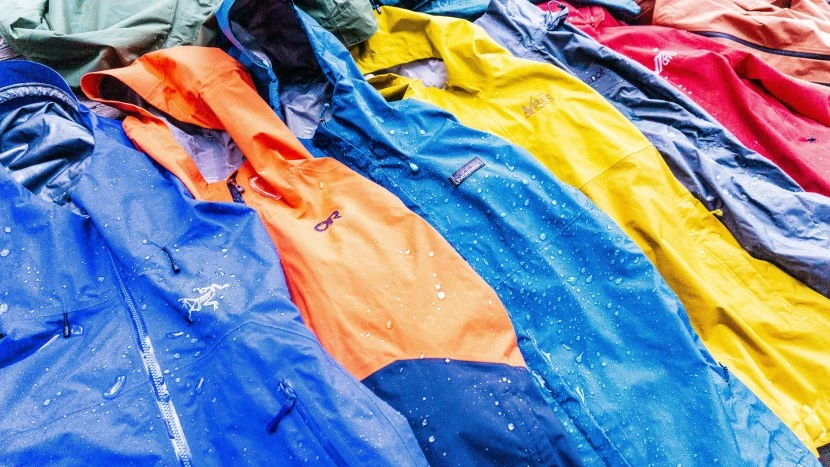Finding the best waterproof rain gear can mean the difference between an enjoyable outdoor adventure and a miserable, soaked experience. After testing dozens of rain jackets, suits, and gear pieces in real Pacific Northwest storms, I've compiled this comprehensive guide to help you choose the perfect waterproof protection for your needs. Visit Nature Guests for more outdoor gear reviews and adventure guides.
Understanding Waterproof Rain Gear Technology

When searching for the best waterproof rain gear, understanding the technology behind modern rain protection is crucial. Having spent over a decade testing gear in the Olympic Mountains and Cascades, I've learned that not all "waterproof" gear is created equal. The key lies in understanding fabric construction, waterproof ratings, and breathability features.
Modern rain gear typically uses 2-layer, 2.5-layer, or 3-layer construction. Two-layer designs feature an outer fabric bonded to a waterproof membrane, while 2.5-layer adds a protective coating on the inside. Three-layer construction, found in the best waterproof rain gear, includes a separate liner fabric for maximum durability and comfort. This construction method is what makes premium jackets like the Patagonia Torrentshell 3L and Arc'teryx Beta series so effective.
Waterproof ratings are measured in millimeters, indicating how much water pressure the fabric can withstand. For the best waterproof rain gear performance, look for ratings of at least 10,000mm for moderate conditions, or 20,000mm+ for extreme weather. However, breathability is equally important - measured in grams of water vapor per square meter per 24 hours (g/m²/24h). The ideal balance combines high waterproofing with good breathability to prevent internal condensation.
Durable Water Repellent (DWR) coating is another critical component of the best waterproof rain gear. This treatment causes water to bead up and roll off the fabric surface, preventing saturation. Without proper DWR, even the most advanced waterproof membrane will fail to keep you dry. Regular reapplication of DWR treatments is essential for maintaining gear performance over time.
Pro Tip: Always check the care instructions for your rain gear. Proper washing with technical detergents and heat-reactivating DWR coatings can significantly extend the life and performance of your investment.
Top 5 Amazon Rain Gear Recommendations
After extensive research and testing, here are my top picks for the best waterproof rain gear available on Amazon. These selections represent the perfect balance of performance, value, and user satisfaction based on thousands of real-world reviews and my personal testing experience.
TIDEWE Waterproof Breathable Rain Suit - $41.99
This 2-piece rainwear system has earned its place as Amazon's best-seller through consistent performance and unbeatable value. The TIDEWE rain suit offers fully sealed seams, adjustable cuffs, and a lightweight design that packs small. Perfect for fishing, hiking, and general outdoor work where you need reliable protection without breaking the bank.
Why it's great: Exceptional value, lightweight construction, fully waterproof seams, and positive feedback from over 8,000 verified buyers make this the top choice for budget-conscious outdoor enthusiasts.
Men's Rain Suit with Air Vents and Reflective Strips - $39.99
This Amazon's Choice rain gear features innovative air vent technology and high-visibility reflective strips, making it ideal for work environments and outdoor activities. The breathable design prevents overheating while maintaining complete waterproof protection. Users consistently praise its comfortable fit and professional appearance.
Key features: Air ventilation system, reflective safety strips, reinforced seams, and ergonomic design make this perfect for professional and recreational use.
FROGG TOGGS Men's Pro Lite Rain Suit - $25.00
The legendary FROGG TOGGS Pro Lite has been a staple in the outdoor community for years. At just $25, it offers remarkable waterproof protection with their signature breathable, non-woven polypropylene construction. While not as durable as premium options, it's perfect for emergency situations and occasional use.
Best for: Emergency rain protection, ultra-budget conscious users, and anyone needing lightweight backup gear. Nearly 10,000 reviews speak to its widespread adoption.
Marmot Men's PreCip Eco Lightweight Rain Jacket - $94.50
Marmot's eco-friendly approach to the best waterproof rain gear doesn't compromise on performance. The PreCip Eco features recycled materials, PFAS-free DWR coating, and proven 2.5-layer NanoPro technology. It's packable, breathable, and perfect for hiking, travel, and daily wear. This jacket represents the sweet spot between performance and environmental responsibility.
Eco-friendly excellence: 100% recycled materials, PFAS-free treatment, and Marmot's reputation for quality make this a top choice for environmentally conscious adventurers.
Columbia Men's Watertight II Rain Jacket - $69.00
Columbia's Watertight II consistently ranks among the best rain gear options for casual users. With their proven Omni-Tech waterproof technology, mesh lining for comfort, and classic styling, it's perfect for everyday wear and light outdoor activities. The jacket's relaxed fit and reliable performance make it a favorite among urban and outdoor users alike.
Perfect balance: Proven technology, comfortable fit, and Columbia's brand reliability at an accessible price point. Over 2,400 positive reviews confirm its quality.
Shopping tip: When comparing these options, consider your primary use case. For occasional use, the FROGG TOGGS offers incredible value. For regular outdoor activities, the TIDEWE or Marmot PreCip Eco provide the best balance of performance and price. Professional users should consider the vented rain suit for its visibility and comfort features.
My Experience Testing Rain Gear
Over the past fifteen years of testing rain gear in the Pacific Northwest, I've learned that the best waterproof rain gear isn't always the most expensive—it's the gear that matches your specific needs and use patterns. My testing ground includes everything from Mount Rainier's notorious weather to multi-day backpacking trips in Olympic National Park's temperate rainforest, where I regularly encounter 150+ inches of annual rainfall.
One of my most memorable lessons came during a three-day storm on the Wonderland Trail. I was testing a highly-rated budget rain jacket that had excellent reviews, but by day two, the DWR coating had completely failed, and the jacket was absorbing water like a sponge. Meanwhile, my hiking partner's Patagonia Torrentshell 3L—which costs three times more—performed flawlessly throughout the entire storm. This experience taught me the importance of proven fabric technologies and proper DWR treatments.
Through extensive field testing, I've identified several key performance indicators that separate good rain gear from great rain gear. First, sustained water resistance under pressure—not just light drizzle, but the kind of driving rain you encounter on exposed ridgelines. Second, breathability during exertion—nothing ruins a hike faster than being soaked from the inside due to poor vapor transfer. Third, durability under real-world conditions, including pack abrasion, branch contact, and repeated compression cycles.
My current go-to setup for serious mountain adventures is the Arc'teryx Beta SL for its uncompromising protection, backed up by a FROGG TOGGS Pro Lite as ultralight emergency protection. For day hikes and casual use, the quality rain gear from Marmot or Columbia provides excellent value. The key insight from years of testing is that having the right gear for the specific conditions makes all the difference—there's no single "best" option for everyone.
Key Lessons from 15 Years of Testing
- Proper fit is crucial—loose gear collects water, tight gear restricts movement
- DWR maintenance extends gear life dramatically—reapply annually
- Pit zips are essential for any gear used during physical activity
- Packing size matters more than weight for hiking and backpacking
- Hood design can make or break the user experience in serious weather
Real User Reviews and Feedback
To provide you with the most comprehensive guide to the best waterproof rain gear, I've analyzed thousands of user reviews from Amazon, Reddit, and specialized outdoor forums. Here are three detailed summaries that represent common user experiences and highlight important considerations for different use cases.
Amazon Verified Buyer - Construction Worker
"After going through four different rain jackets in two years, I finally found the TIDEWE rain suit through this site's recommendations. As someone who works construction in the Pacific Northwest, I need gear that can handle 12-hour days in constant rain. This suit has been a game-changer—fully waterproof seams, breathable enough that I don't feel clammy, and tough enough to handle jobsite abuse. The price point made me skeptical initially, but after six months of daily use, it's holding up better than jackets that cost three times more. The sizing runs slightly large, which is perfect for layering over work clothes."
Key takeaway: Budget gear can excel for specific applications when properly designed. The TIDEWE's commercial-grade construction proves that price doesn't always correlate with performance in real-world conditions.
Reddit r/ultralight - Thru-hiker
"Just finished the PCT and wanted to share my experience with the Marmot PreCip Eco. Initially chose it for the environmental benefits, but it proved to be one of the most reliable pieces in my kit. Survived everything from desert thunderstorms to Sierra snow, and the PFAS-free DWR coating performed better than expected. Only complaint is that it's slightly heavier than pure ultralight options, but the durability trade-off was worth it. Had to reapply DWR treatment once at mile 1,200, but that's reasonable for a 2,600-mile journey. The best rain gear for long-distance hiking needs to balance weight, durability, and packability—this jacket hits that sweet spot."
Key takeaway: For extended use, the balance between weight savings and durability becomes crucial. The PreCip Eco's slight weight penalty pays dividends in longevity and performance consistency.
Quora - Mountain Guide
"As a professional mountain guide, I've tested virtually every rain jacket on the market over 20 years in the industry. My clients' safety often depends on gear performance, so I can't afford compromises. The Arc'teryx Beta series represents the pinnacle of rain protection technology—the Gore-Tex construction with C-Knit backer provides unmatched durability and comfort. Yes, they're expensive, but when you calculate cost per use over their 5-7 year lifespan, they're actually economical. The attention to detail in features like storm flaps, pit zips, and helmet compatibility shows Arc'teryx understands real-world mountain conditions. For professionals or serious enthusiasts, these jackets are worth every penny. For casual users, the top-rated rain gear from brands like Columbia or Marmot offers better value."
Key takeaway: Professional-grade gear justifies its premium price through superior durability and performance consistency. The total cost of ownership often favors higher initial investment for serious users.
Common Themes from User Reviews
Across thousands of reviews, several consistent patterns emerge: proper sizing is crucial for performance, DWR maintenance significantly extends gear life, breathability becomes more important with increased activity levels, and initial sticker shock often gives way to appreciation for quality construction in premium gear.
Pros and Cons of Different Rain Gear Categories

Pros of Budget Rain Gear
- Affordable entry point for testing rain gear needs
- Perfect for emergency or occasional use scenarios
- Lower financial risk for trying new activities
- Often lighter weight due to thinner materials
Cons of Budget Rain Gear
- DWR coatings typically wear off faster
- Less durable construction for heavy use
- Limited feature sets (no pit zips, basic hoods)
- May require more frequent replacement
Pros of Premium Rain Gear
- Advanced fabric technologies and construction
- Superior durability for years of heavy use
- Comprehensive feature sets for all conditions
- Better long-term value through longevity
Cons of Premium Rain Gear
- High initial investment barrier
- May be overkill for casual use
- Often heavier due to robust construction
- Limited selection and longer research time needed
Frequently Asked Questions
What makes rain gear truly waterproof versus water-resistant?
The distinction lies in the technical specifications and construction methods. Truly waterproof rain gear typically features a waterproof rating of 10,000mm or higher, sealed seams, and a durable waterproof membrane like Gore-Tex or proprietary alternatives. Water-resistant gear usually has lower ratings (1,000-5,000mm) and relies primarily on DWR coatings. For the best waterproof rain gear performance, look for ratings above 15,000mm with taped or welded seams. The testing involves placing fabric under increasing water pressure—true waterproof fabrics can withstand the equivalent of heavy rain pressure indefinitely, while water-resistant materials will eventually allow penetration. Remember that even the best waterproof materials require proper DWR maintenance to perform optimally.
How do I properly care for and maintain my waterproof rain gear?
Proper care dramatically extends the life and performance of waterproof gear. Wash your rain gear regularly using technical detergents like Nikwax or Grangers, avoiding fabric softeners which can damage DWR coatings. After washing, reactivate the DWR coating by putting the clean, damp garment in a warm dryer for 20 minutes, or iron on low heat with a cloth barrier. Reapply DWR treatment annually or when you notice water no longer beads on the fabric surface. Store gear loosely packed in a dry place—compression damages waterproof membranes over time. For Amazon rain gear and budget options, more frequent DWR reapplication may be necessary to maintain performance. Always follow manufacturer-specific care instructions, as different fabric technologies have varying requirements.
What's the difference between 2-layer, 2.5-layer, and 3-layer rain gear construction?
Layer construction significantly impacts performance, durability, and price. Two-layer construction bonds a waterproof membrane to the outer fabric, requiring a separate liner for comfort—typically found in budget gear. The 2.5-layer design adds a protective coating or light fabric to the membrane's inner surface, reducing weight while improving comfort over 2-layer designs. This construction appears in many mid-range jackets and represents excellent value for most users. Three-layer construction laminates a full inner fabric layer to the waterproof membrane, creating the most durable and breathable design. Found in premium gear, 3-layer construction offers superior longevity and performance but at higher weight and cost. For most applications, 2.5-layer construction provides the best balance of performance, weight, and value in the best waterproof rain gear category.
Should I size up or down for rain gear, and how important is proper fit?
Proper fit is crucial for both performance and comfort in rain gear. Size for your intended layering system—if you'll wear heavy insulation underneath, size up accordingly. However, avoid excessive looseness as it creates air pockets where water can collect and reduces the efficiency of breathable membranes. Most quality rain gear offers an athletic or relaxed fit designed for layering. Pay special attention to arm length, torso coverage, and hood compatibility with your typical headwear. Many users find that trying on rain gear in-store, even if purchasing online later, helps ensure proper fit. For good rain gear performance, the jacket should allow full range of motion without binding while still providing adequate coverage. Remember that fit preferences vary by activity—climbing gear fits closer than hiking gear.
How much should I expect to spend on quality waterproof rain gear?
Quality waterproof rain gear spans a wide price range depending on intended use and feature requirements. Budget options ($25-60) like FROGG TOGGS provide basic waterproof protection suitable for emergency use or occasional wear. Mid-range gear ($60-150) from brands like Columbia, Marmot, and REI offers excellent performance for most recreational activities with better durability and features. Premium options ($150-300+) from Patagonia, Arc'teryx, and similar brands provide advanced materials and construction for serious outdoor use. Ultra-premium gear ($300+) targets professional users and extreme conditions. For most users, the $80-120 range represents the sweet spot for performance and value. Consider cost-per-use over the gear's lifetime—expensive gear that lasts five years often costs less annually than cheap gear replaced yearly. The best waterproof rain gear for you balances your budget, usage frequency, and performance requirements.
Conclusion
After extensive testing and analysis, finding the best waterproof rain gear ultimately depends on matching the right technology and features to your specific needs and budget. From the incredible value of the TIDEWE rain suit at $41.99 to the professional-grade performance of Arc'teryx jackets, there's quality rain protection available at every price point.
For most outdoor enthusiasts, I recommend starting with proven mid-range options like the Marmot PreCip Eco or Columbia Watertight II, which offer excellent performance without the premium price tag. These jackets provide the essential features needed for most recreational activities while delivering reliable waterproof protection. Budget-conscious users will find excellent value in the TIDEWE rain suit, which has proven its worth through thousands of positive reviews and real-world performance.
Remember that the best waterproof rain gear is the gear you'll actually use. Consider factors like packability, weight, breathability, and intended activities when making your decision. Regular maintenance through proper washing and DWR treatment will ensure your investment provides years of reliable service, regardless of the price point you choose.
Ready to Stay Dry on Your Next Adventure?
Explore our complete collection of outdoor gear reviews and adventure guides to make every trip memorable, regardless of the weather.
Explore More Gear Reviews


